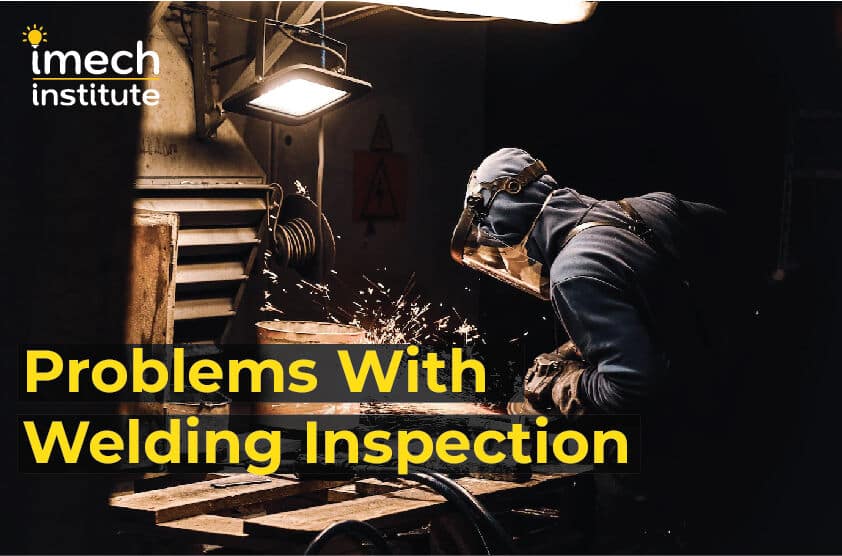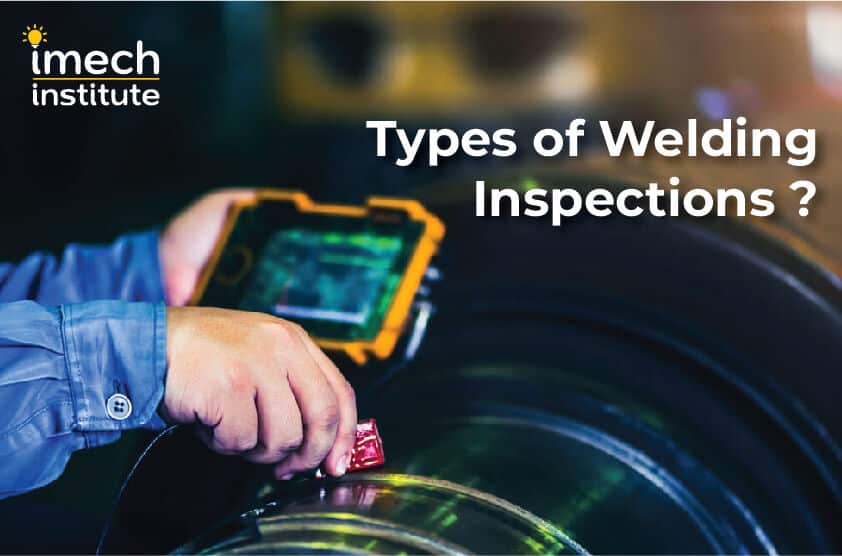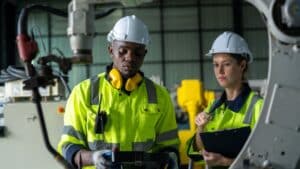A Comprehensive Guide to Welding Inspection and Testing
Welding inspection is a critical process that helps to ensure the quality and safety of welded joints.
If not performed properly, welding can result in a variety of problems, such as poor weld quality, cracking, and inclusions. In order to avoid these issues, it is important to have a robust welding inspection and testing program in place.
In this guide, we will discuss the different types of welding inspections and tests, as well as the problems they are designed to identify. We’ll also take a look at some of the tools and equipment used for welding inspection and testing. Finally, we’ll provide some tips for ensuring that your welding-inspection program meets all of your needs.
What Is Welding Inspection?
Weld inspection is the process of visually examining a weld to ensure that it meets the required standards. The purpose of welding-inspection is to ensure that the weld is of the correct type, size, and location, and that it has been properly executed. It is part of Quality Control or QC.
Weld inspection can be performed by either the welder or a trained inspector. The welder is responsible for ensuring that the weld meets the requirements of the drawings and specifications. The inspector is responsible for verifying that the weld meets the requirements of the code or standard.
There are two types of welding inspection: destructive and non-destructive. Destructive welding-inspection involves taking a sample of the weld and testing it to determine its strength. Non-destructive welding inspection does not involve taking a sample of the weld; instead, it uses methods such as X-ray, ultraviolet light, or magnetic particle to inspect the weld.
The Purpose of Welding Inspection
You might be wondering why weld inspection is so important. After all, can’t you just weld something and hope for the best?
The answer is no, you really can’t. The whole point of weld inspection is to make sure that the welds are strong and will hold up over time. This is especially important if the welds are being used in a structure that will be under a lot of stress, like a bridge or a building.
Weld inspection is also important because it can help you identify problems early on, before they become bigger problems. For example, if there is a crack in the weld, it’s going to be much easier to fix if it’s caught early.
So, as you can see, weld inspection is pretty important. And luckily, there are a few different ways to do it.

Problems With Welding Inspection
The most common problem with this program is that it can be very time-consuming. This is because you have to inspect each weld individually to make sure it meets the required standards.
Another problem is that welding can be expensive. This is because you need to purchase the right tools and equipment to do the job properly.
The last problem with weld inspection is that, if safety is neglected then there will be serious consequences.
Solutions to the Problems With Weld Inspection
If you’re looking for solutions to the problems we just talked about, you’re in luck. There are a few things you can do to make sure your welding inspections goes off without a hitch.
First, make sure you’re using the right tools. There are a lot of different options out there, so do your research and invest in the best quality products you can find.
Second, get familiar with the different types of welding inspections and what they entail. This way, you’ll know what to expect and can be prepared for anything that comes up.
Finally, work with a reputable company that specializes in welding inspection. They’ll have the experience and knowledge to make sure everything goes smoothly and will be able to answer any questions you have along the way.

Types of Welding Inspections
There are two main types of welding inspections: visual and other Non-Destructive testing.
Visual inspections are just what they sound like: you’re looking for anything that’s out of place, like cracks, voids, or porosity. Non-destructive inspections are a bit more complicated. Here, you’re trying to assess the quality of the weld without damaging the material.
The most common type of non-destructive inspection is called radiographic testing, and it uses X-rays or gamma rays to take a look at the weld. This is useful for looking for things like voids, porosity, or inclusions.
Another type of non-destructive inspection is called ultrasonic testing. This uses high-frequency sound waves to look for things like cracks, voids, or inclusions.
One more is Penetrant testing which can easily find out surface breaking discontinuities.
Finally, there’s magnetic particle testing. This uses magnetic fields to look for things like cracks or other defects in the weld.
When to Do a Weld Inspection
The frequency of inspections will depend on the project requirements. For example, if you’re welding on a pressure vessel, you’ll need to do an inspection after each weld is made and for structural welding every weld may not require welding inspection.
In general, though, it’s a good idea to do a visual inspection of your welds every day. This way, you can catch any problems early on and fix them before they become bigger issues.
If you’re not sure how often you should be inspecting your welds, talk to your supervisor or the project manager. They’ll be able to tell you what the requirements are.
How can you Do Welding inspection course ? How you Level up your career ?
If you want to pursue a career in welding , you can do a welding course. This course will give you the skills and knowledge you need to perform welding inspections and testing.
IMECH is a leading training institute in India that offers professional courses in welding inspection. The course covers the principles of welding, metallurgy, and inspection methods. It also includes practical training in weld inspection and testing. These courses are usually taken up by delegates who are preparing for AWS CWI Exam or CSWIP Exam.
Conclusion
We hope that this guide has given you a comprehensive overview of weld inspection and testing. If you’re interested in learning more, we encourage you to check out our welding inspector course page.
This course is designed for any graduate or engineer who wants to learn more about this important topic. It covers everything from the basics of weld inspection to more advanced topics like welding metallurgy and non-destructive testing.
Welding-inspection is an important part of ensuring the quality of welds, and we believe that everyone who works with welds should have a good understanding of it. That’s why we offer this course, and we hope you’ll take advantage of it.
So what are you waiting for? Get started on your welding inspection career today.
What is welding inspection and why is it essential?
Welding inspection is the practice of visually inspecting welds to verify they meet required standards, which helps ensure quality and safety when dealing with large structures like bridges or buildings that require welding joints to support heavy loads.
What are the two primary forms of welding-inspections?
Visual inspections involve looking for visible defects while non-destructive testing assesses weld quality without damaging materials.
What are some common challenges related to welding ?
Some issues related to welding inspection include time-consuming inspections, high costs for purchasing the necessary tools and equipment, and potential safety implications if inspections are neglected.
Are these problems addressable during weld inspection?
In order to effectively address these problems, it's essential that businesses invest in high-quality tools and become familiar with various inspection techniques before teaming up with reputable firms specializing in welding inspection.
What non-destructive testing methods can be used for welding inspection?
Non-destructive methods used include radiographic (X-rays or gamma rays), ultrasonic testing with high frequency sound waves and magnetic particle testing using magnetic fields.
When should weld inspections take place?
Depending on project requirements, visual inspections should take place regularly to detect and address any potential issues quickly. Daily visual checks may be beneficial.
How can I pursue a career in this field?
To enter this field of inspection, enroll in a welding inspector course like provided by IMECH that cover welding principles, metallurgy, and inspection methods.
What Does a Welding inspector Course Cover?
this course typically offers training on weld inspection techniques, welding metallurgy and nondestructive testing methods.
Who could benefit from taking a this inspection course?
Graduates or engineers seeking to gain more expertise in weld inspection and testing can benefit greatly from taking part in a welding inspection course.
Why is welding inspection essential in assuring weld quality and safety?
Regular weld inspection helps identify potential problems early, so that strong welds that withstand stress and load in various structures are built.





